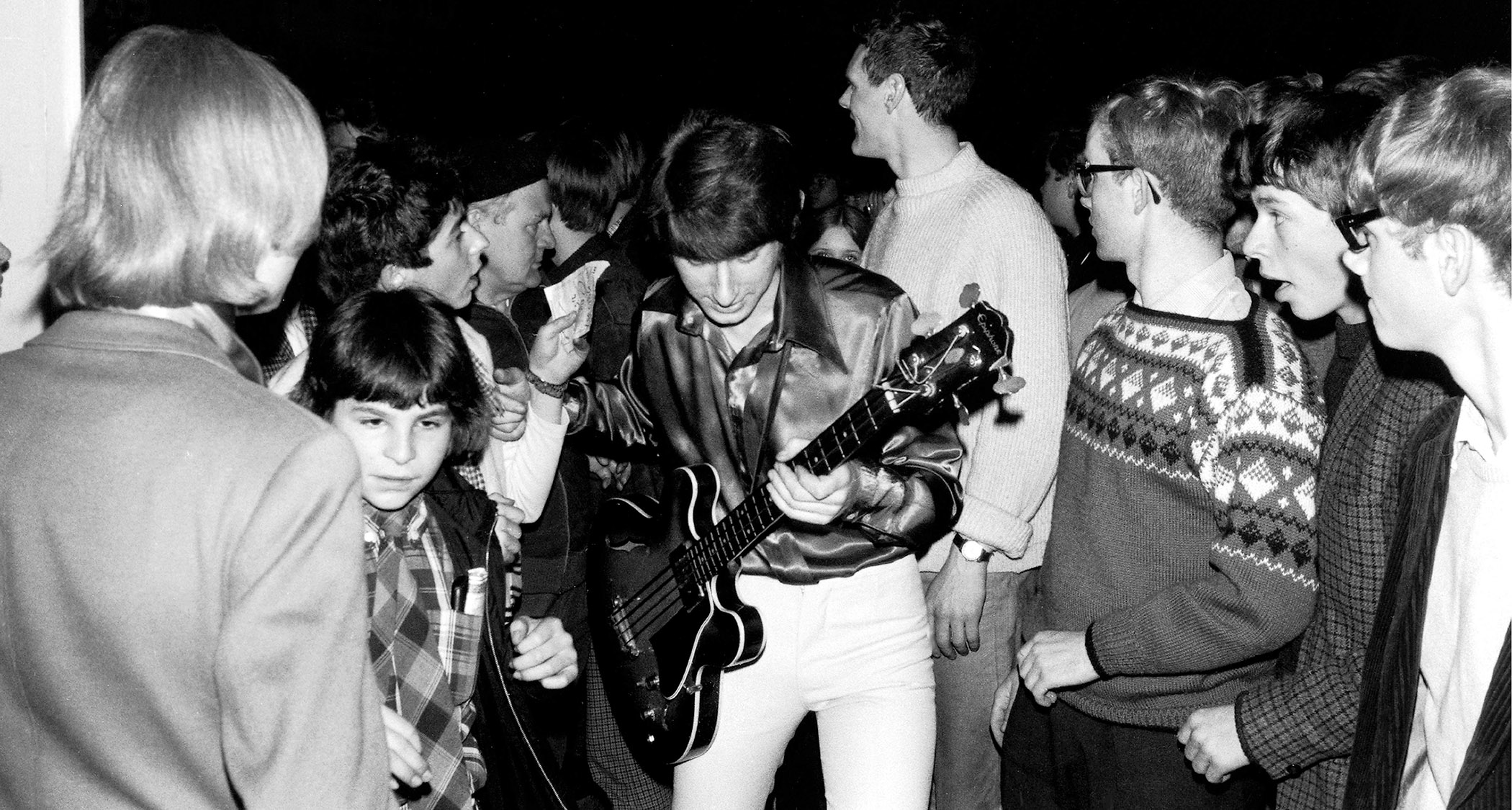The 10 most famous bass guitars of Led Zeppelin’s John Paul Jones
Browse the bass collection of John Paul Jones, including 3 vintage Fenders, an 8-string Hagström and... a bass lap steel with built-in MIDI screen?
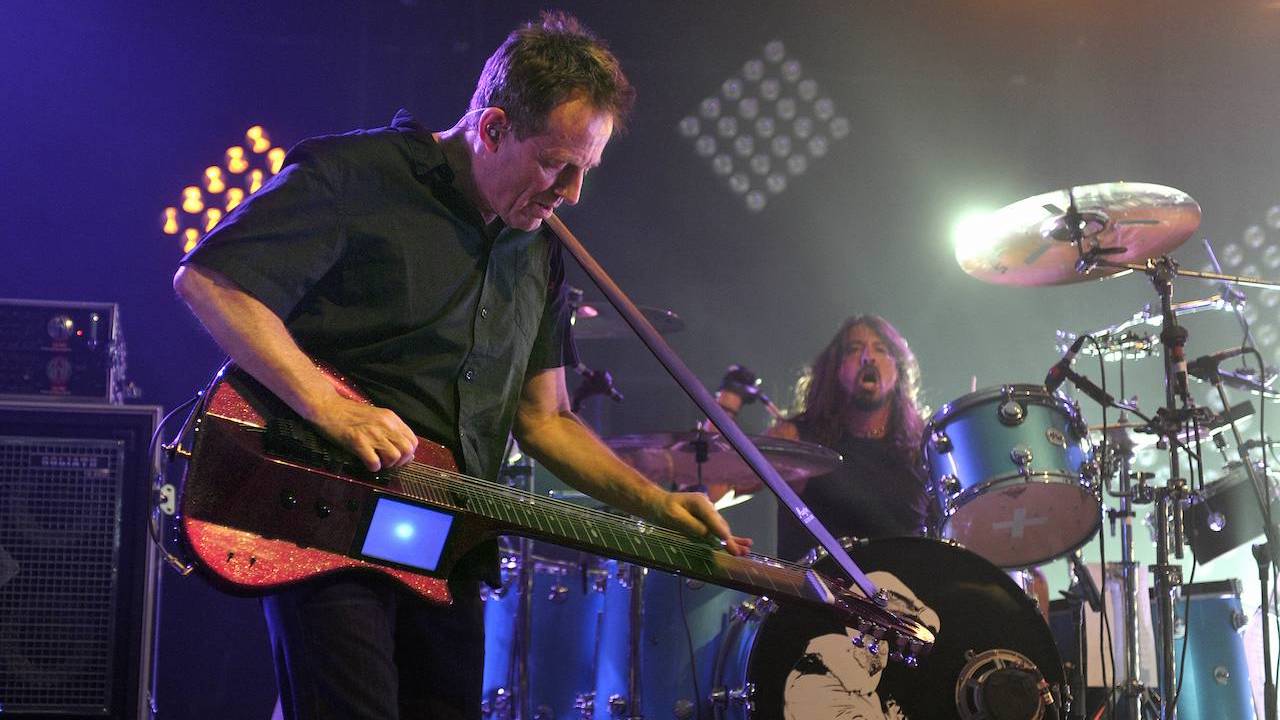
From his early days as a studio musician for Decca Records in London’s swinging ‘60s, to the triumphs and traumas of Led Zeppelin, to more recent adventures with Seasick Steve and Them Crooked Vultures, John Paul Jones enjoys an enviable spot as one of the most respected elder statesmen in rock and blues.
From his early beginnings with The Shadows, through to his most famous recordings with Led Zep, and into his solo career, Gibson, Fender and Alembic bass guitars have all fallen into the hands of John Paul Jones at some point.
Even though a small number of essentials have defined his sound, a number of unlikely bass models have also been cycled in and out of his locker. Today, we’re compiling some of his most famous instruments.
Dallas Tuxedo
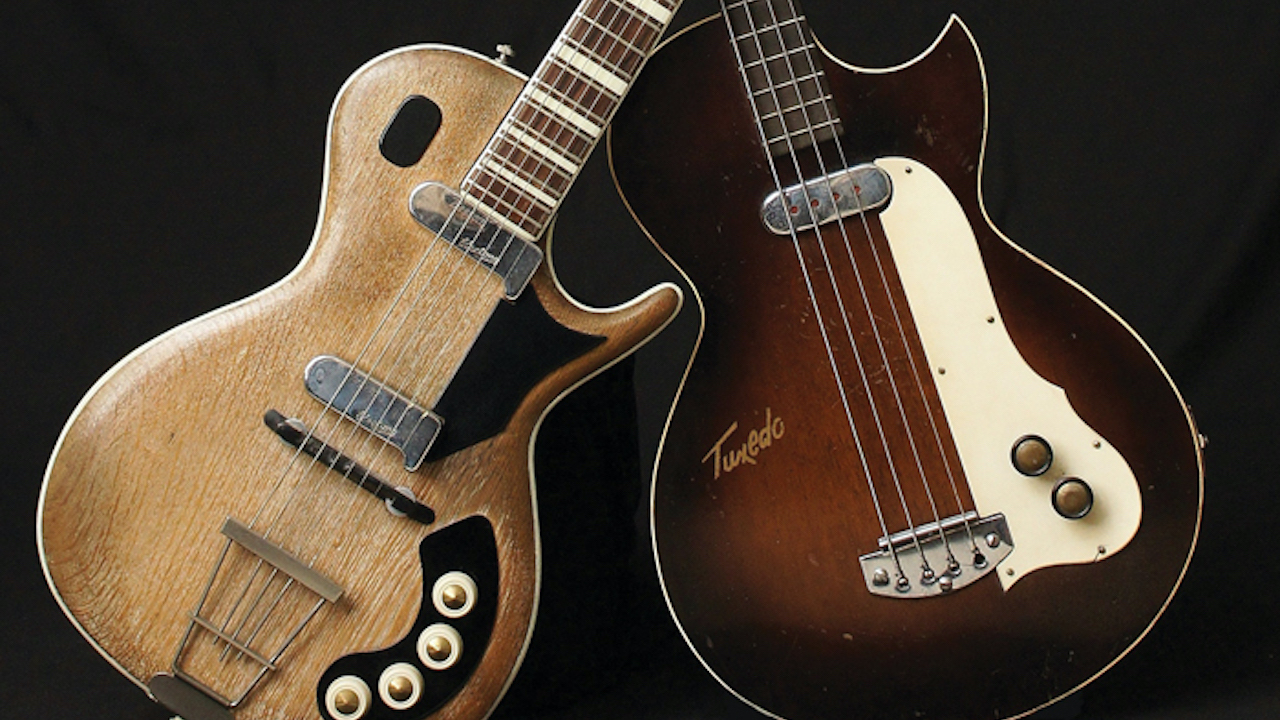
JPJ’s first bass guitar was a Dallas Tuxedo, a single-cut instrument made in England by Dallas Arbiter in the late ‘50s. “I think it was the only bass made in England at that time,” said Jones in an interview for Elixir Strings. “The whole thing was carved out of a single piece of wood. It’s an extraordinary instrument, and it had not a bad sound. They made a guitar version that John Lennon had."
1962 Fender Jazz Bass
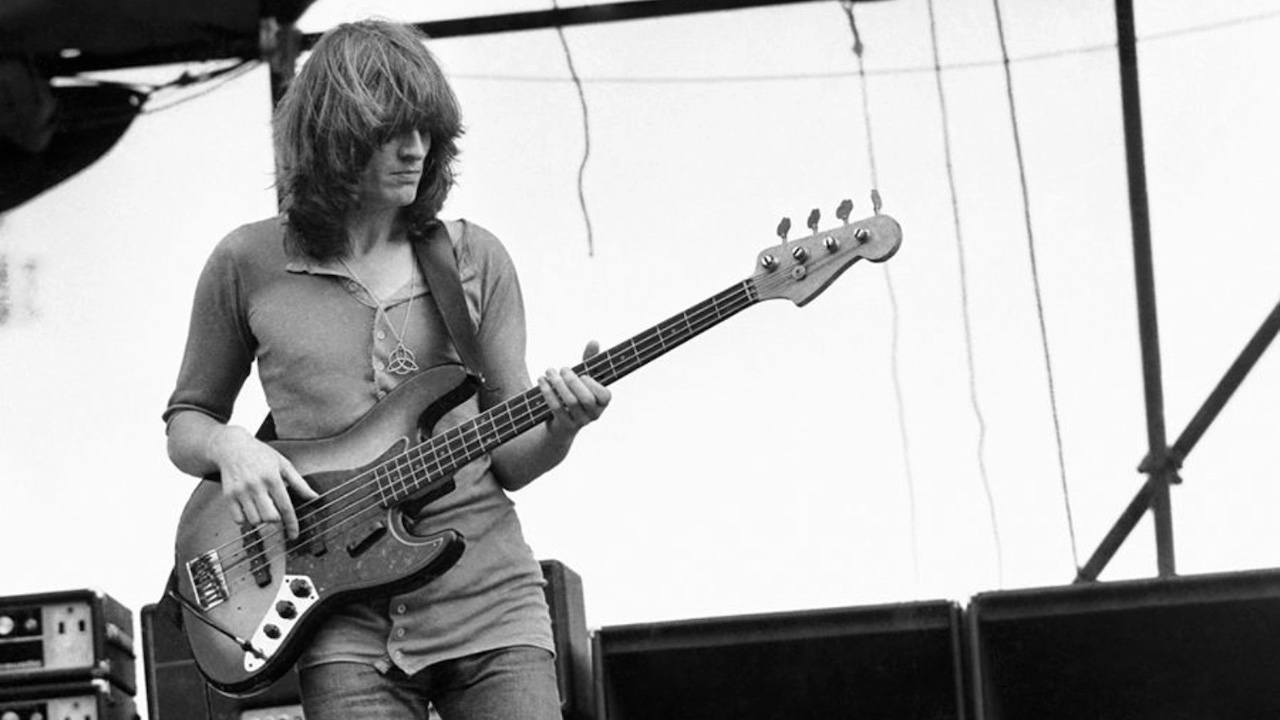
John Paul Jones has stayed faithful to his Fender Jazz Bass (serial number #74242) ever since he first bought it in 1963. Often cited as the bass for which he is best known with Led Zeppelin, Jones still plays it today, though it was retired from touring in 1976 when he started experimenting with 8-string basses.

1952 Fender Precision Bass
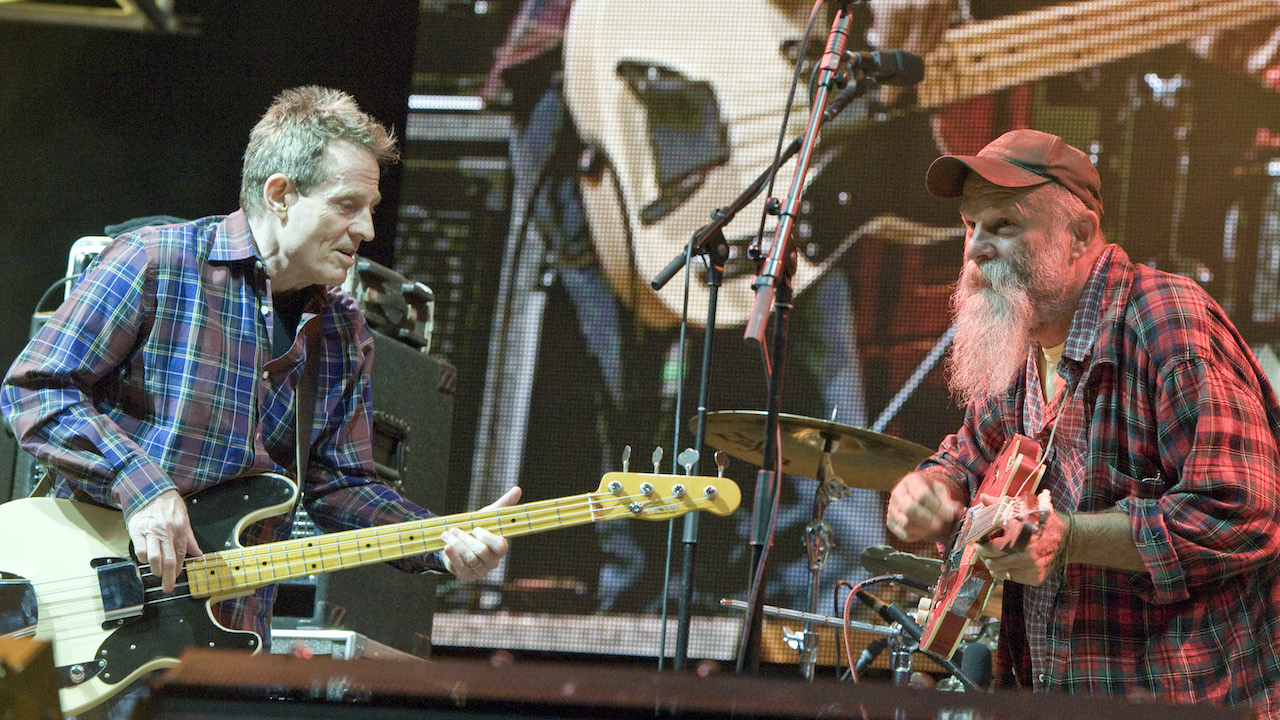
Another bass often seen in Led Zeppelin’s earlier days is a 1952 Precision bass (serial number #0959). It was eventually stripped back and restored to it’s original blonde finish by luthier Hugh Manson, complete with re-chromed hardware and new Seymour Duncan pickup.
1967 Fender Bass V

Jones used a 1967 Fender Bass V tuned E to C while touring with Led Zep in 1973. Despite its somewhat limiting 15-fret range, he used it on songs Over the Hills and Far Away, Heartbreaker, and The Song Remains The Same. In a 2012 interview with Dave Lewis, Jones later called the Fender Bass V ‘the ugliest bass guitar in the world.’
All the latest guitar news, interviews, lessons, reviews, deals and more, direct to your inbox!
Gibson EB-1 Bass
The EB-1 was Gibson’s first bass and proved to be a worthy competitor to Höfner’s Violin bass, which was also based on a small, narrow-waisted body shape. Although the EB-1 didn’t offer much in terms of tonal range, it did have a ‘middy’ sound that cut through the guitars if you turned it up loud enough.
Jones got hold of a Gibson EB-1 for the recording of Led Zeppelin III. “The one I have went through Little Richard’s band," he says. "And then through James Brown’s band, before arriving in England. In fact, I saw it on an old movie clip of Little Richard.”
Hagström H8
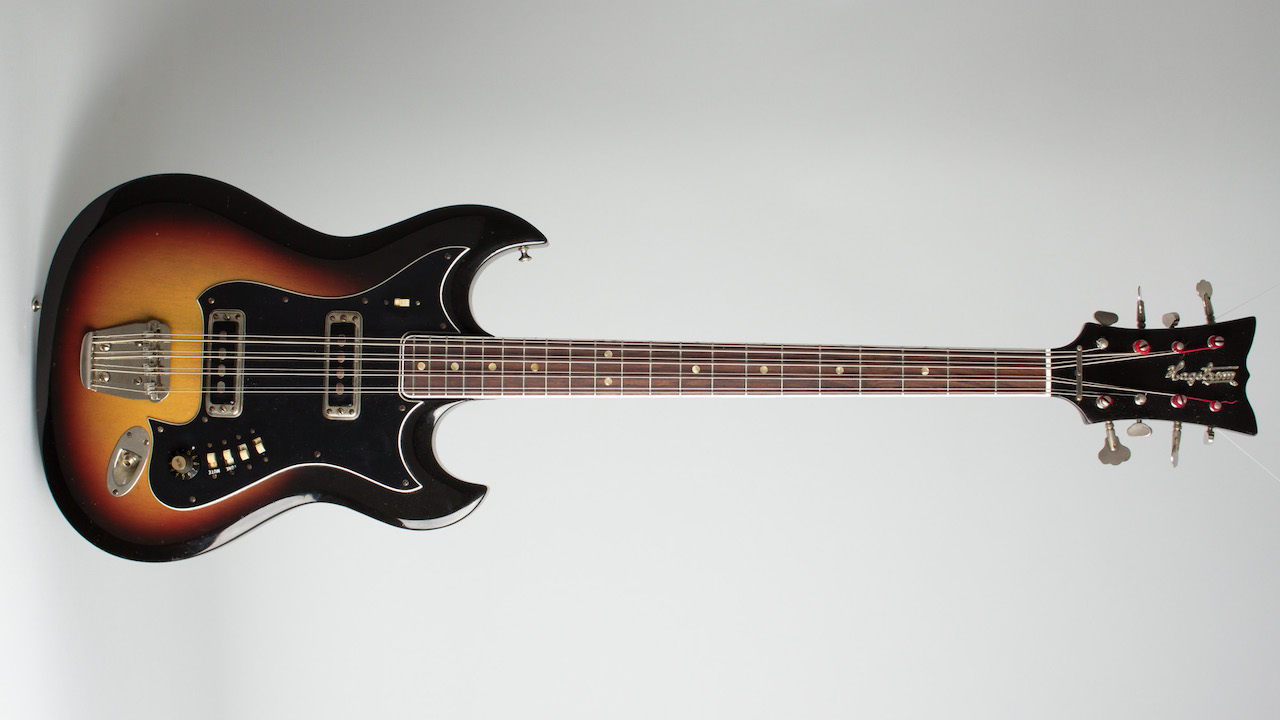
Between 1970 and 1976 Jones played a Hagström H8, which is a Swedish twin-pickup 8-string bass guitar that features a double-cutaway birch or mahogany body and a short 30-inch scale. “I remember Hendrix used one,” says Jones. “It had a short scale length and was very noisy. Later, I went to Alembic.”
Alembic Series II 4-string

In the latter years of Led Zeppelin, Jones became an Alembic endorser, favouring an Alembic Series II built by Rick Turner sometime after the recording of the 1976 album, Presence. It had LEDs all the way up the fingerboard. “My tech used to just hold it up and I could walk onstage in a black out!”
Manson Guitars G8 8-string bass
The Manson G8 8-string first made an appearance when Jones collaborated with avant-garde singer Diamanda Gallas for his 1994 Sporting Life album. It features a special pickup splitter and DI box that allows the two EMG pickups to run into separate amps, with the high end free to be treated with effects, while the bass is left dry. Jones requested it have a serial number of #74243, after his '62 Jazz.
Manson Guitars Signature E-Bass
The E-Bass was made in the early Nineties, which Manson then released as a signature instrument. It’s a neck-through-body design with a maple top and EMG pickups. “In the case of ‘Eric’, John’s first bass in this shape, we have a single EMG placed in the sweet spot,” explains luthier Hugh Manson. “With ‘Son of Eric’ there are two EMGs recently upgraded to dual-coil designs.”
In 2021 Manson updated the E-Bass to feature a graphite-reinforced maple neck, Aguilar DCB pickups and an OBP-2 preamp. Watch John Paul Jones and 'Son of Eric' onstage with the Foo Fighters at Wembley Stadium.
Manson Guitars ‘Lapaphone’
The ‘Lapaphone’ is an 8-string bass lap steel with a Fernandes sustainer pickup, a touchscreen MIDI controller and a Hipshot Trilogy bridge, which allows Jones to switch between different tunings on the fly.
Manson also built two other bass guitars specifically for Jones to use live with Them Crooked Vultures. The Manson JPJ 10-string features five doubled strings and a stereo output, while a 12-string bass made with Australian blackwood can also be heard on the supergroups 2009 debut album.
To find out more about the Manson John Paul Jones E-Bass visit mansonguitarworks.com

Nick Wells was the Editor of Bass Guitar magazine from 2009 to 2011, before making strides into the world of Artist Relations with Sheldon Dingwall and Dingwall Guitars. He's also the producer of bass-centric documentaries, Walking the Changes and Beneath the Bassline, as well as Production Manager and Artist Liaison for ScottsBassLessons. In his free time, you'll find him jumping around his bedroom to Kool & The Gang while hammering the life out of his P-Bass.



